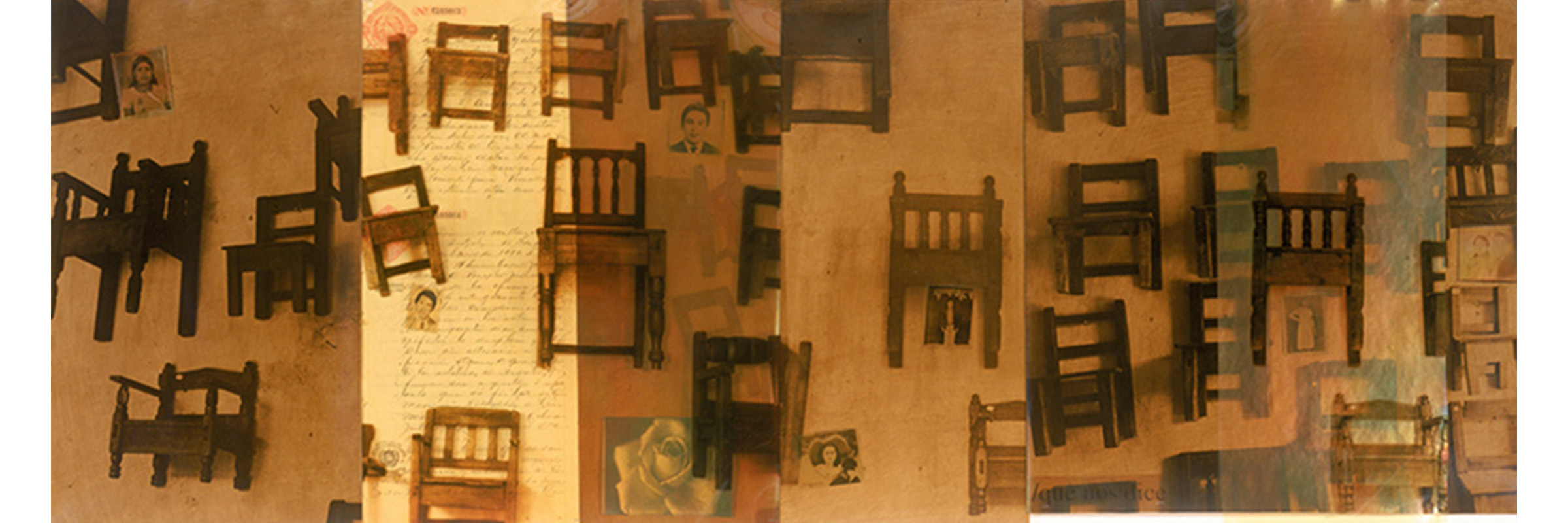
A History of Handwork | Ausencias
Guest blogger Renna Bushko '18 wrote this post as part of her coursework for ARH 280: Photography and the Politics of Invisibility taught by Post-Doctoral Fellow Anna Lee. This course informed the current exhibition A History of Handwork: Photographs from the SCMA Collection on view on the Museum’s second floor until December 3, 2017
Luis González Palma is a postmodern South American photographer renowned for his photographic collages. González Palma’s photographs between 1989-2000 reflect the political state of Guatemala during the latter half of the 20th century, exhibiting the experiences of its citizens during the brutal Guatemalan Civil War (1960-1996). Ausencias, one of the most prominent works in González-Palma’s series, illuminates the violence that Guatemalan citizens experienced as a result of the war. It was particularly arduous for the Maya, as they were ostracized by Guatemalans of European descent (Ladinos). During the late 1990s, González-Palma created photographic collages illuminating the grief of indigenous peoples by utilizing symbols of loss, trauma, fear, and violence in contrast with beauty and human fragility.
González Palma uses photographic and constructive techniques wherein multiple layers of materials such as passport photographs, vellum, and historical documents are combined to provide both symbolic and physical dimensionality to the work. By adding a dark dye called bitumen and printing his photographs on sepia tint, González Palma gives the work an antiquated quality.
The title Ausencias -- Absences in English -- figuratively evokes nostalgia and sadness. Combining images of vacant chairs with passport photographs suggests that the people in the photographs once occupied the chairs prior to the war. The heavy wood of the chairs adds to the sensation of discomfort and being placed in a difficult situation, much like being faced with survival during a war. In the lower central portion of the work, a solitary rose symbolizes St. Rose -the patron saint of indigenous people of the Americas. Its presence suggests that the Maya are divinely protected regardless of the violence they experienced. On the lower right-hand side of the work, a small quote saying "que nos dice” --Spanish for “ what it tells us”-- is printed on a vellum rectangle, prompting questions about the work’s purpose. In the background of the second panel, a handwritten official document pokes out from behind a layer of chairs and passport photos to demonstrate the absurdity of how words on paper can permanently change human lives, or even end them. Given the political state of Guatemala, the documents in the background likely refer to the civil war, perhaps even a law that further perpetuated the violence against the Maya.
Palma’s art transcends Guatemala’s borders and expresses a universal pain that lingers in the human psyche. González Palma and uses photography to reconcile with the past. The methods González Palma use transform his work into an emotional memorial that serves as an outcry for peace.